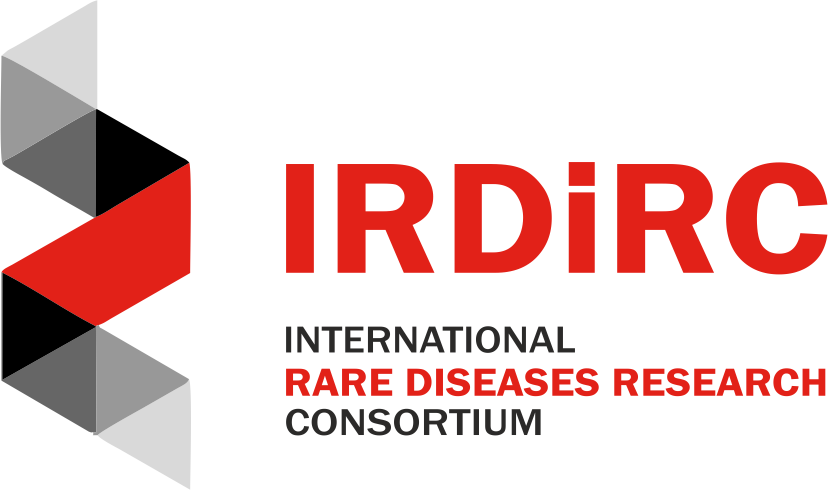The International Rare Diseases Research Consortium (IRDiRC) was launched in 2011 by a joint effort between the European Commission and the US National Institutes of Health with the vision to enable, through research, all people living with a rare disease to receive an accurate diagnosis, care, and available therapy within one year of coming to medical attention.
To accomplish this ambitious task, IRDiRC has established 3 main goals:
Goal 1: All patients coming to medical attention with a suspected rare disease will be diagnosed within one year if their disorder is known in the medical literature; all currently undiagnosable individuals will enter a globally coordinated diagnostic and research pipeline.
Goal 2: 1000 new therapies for rare diseases will be approved, the majority of which will focus on diseases without approved options
Goal 3: Methodologies will be developed to assess the impact of diagnoses and therapies on rare disease patients
Though much progress has been made towards meeting these goals, much work remains ahead.
It is becoming increasingly apparent that newborn screening (NBS) is our greatest weapon in identifying rare diseases early but major challenges exist in implementing national screening programs for all newborns. New emerging technologies, such as next-generation sequencing (NGS), offer the opportunity to screen for genetic disorders through a single test but can pose a challenge in cost, complexity and access to appropriate equipment. In addition, there are ethical considerations of screening newborns for diseases that may not affect them until later life, as well as the potential social stigma. Different cultures may also view NBS in different lights which will often guide national policy that can differ greatly between countries. Taken together, these issues pose a serious challenge to implementing comprehensive NBS programs globally which ultimately impacts on our ability to identify and diagnose rare disease at an early stage.
Given IRDiRC’s goal of shortening the diagnostic odyssey for RD patients, we have brought together international experts to provide insight into the current state of NBS worldwide, highlighting technological advances, as well as the many challenges, to implementing comprehensive screening programs.
Two special editions are in preparation:
- Real World Applications and Technologies – Associate Editor: Virginie Bros-Facer (Illumina, France)
- Policy, Ethics and Patient Perspectives – Associate Editors: Helen Malherbe (Rare Diseases South Africa NPC, South Africa) & Mary Wang (Rare Diseases International, Italy)
The articles are planned to be published in the Rare Disease and Orphan Drugs Journal (RDODJ).
Publications:
Newborn Screening I – Real World Applications and Technologies
A systematic review of real-world applications of genome sequencing for newborn screening. Giuditta Magnifico, Irene Artuso, Stefano Benvenuti. Access the publication: here.
Could federated data analysis be the catalyst accelerating the introduction of newborn genome screening for the detection of genetic disease? Petros Tsipouras, Maria Chatzou Dunford, Hadley Sheppard, Hannah Gaimster, Theoklis Zaoutis. Access the publication: here.
Next-generation sequencing-based newborn screening initiatives in Europe: an overview. Virginie Bros-Facer, Stacie Taylor, Christine Patch. Access the publication: here.
Analysis of genomics implementation in newborn screening for inherited metabolic disorders: an IRDiRC initiative. Guillem Pintos-Morell, Maria Iascone, Giorgio Casari et al. Access the publication: here.
Newborn screening in Mexico and Latin America: present and future. Claudia Gonzaga-Jauregui, Rodrigo Moreno-Salgado, et al. Access the publication here.
Incorporating a new disease in the newborn screening programs in Europe: the spinal muscular atrophy case study. Elena-Alexandra Tataru, Marie-Christine Ouillade, Chun-Hung Chan, David A. Pearce. Access the publication here.
Newborn Screening II – Policy, Ethics and Patient Perspectives
Newborn screening in South Africa: the past, present, and plans for the future
Helen L. Malherbe, Jim Bonham, Michelle Carrihill, et al. Access the publication: here.
Overcoming challenges in sustaining newborn screening in low-middle-income countries: the Philippine newborn screening system
Carmencita D. Padilla, Michelle E. Abadingo, Katherine V. Munda, Bradford L. Therrell. Access the publication: here.
Development of newborn screening policies in Spain 2003-2022: what do we actually need to reach an agreement?
Cristina Valcárcel-Nazco, Lidia García-Pérez, Renata Linertová, Carmen Guirado-Fuentes, Aránzazu Hernández-Yumar, Lucinda Paz-Valiñas, Paula Cantero-Muñoz, Manuel Posada, Pedro Serrano-Aguilar. Access the publication: here.
The Australian landscape of newborn screening in the genomics era
Charli Ji, Michelle A Farrar, Sarah Norris, Kaustuv Bhattacharya, Bruce Bennetts, Ainsley J Newson, Louise Healy, Nicole Millis, Didu S Kariyawasam. Access the publication: here.

